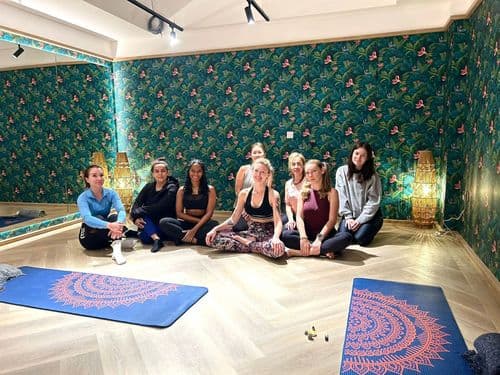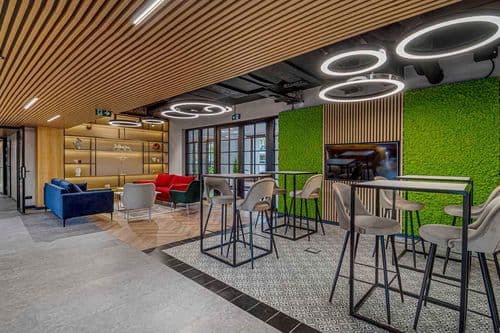The Demise of Auto-Centric Cities
The Demise of Auto-Centric Cities - by Vonder
What are auto-centric cities and what’s wrong with them? Learn about how to increase sustainability with the demise of auto-centric cities.
Auto-Centric Cities
Many large cities are great at prioritizing travel by car. In fact, they were designed that way specifically. For years, many urban planners and transport heads have planned their cities, roads, land use and public transport around making it easier for car owners to travel and park around a city.
The Issues
Auto-centric cities are creating serious problems for their residents. The first issue is that cars generate a lot of pollution. Despite a shift toward electric and hybrid cars in recent years, fossil fuel guzzling cars remain the norm in many cities. Pollution hurts every city resident through a rise in related health issues and a shortened life expectancy.
An auto-centric city dedicates precious land to building more roads, wider roads, and more parking spaces. This takes land away from future housing and community developments. It also limits the land available to expand and improve public transportation links. Auto-centric cities are potentially inaccessible cities with high rates of inequality.
Cities packed with cars have high accident rates. Commuting by car does not make residents happy or satisfied and sitting in traffic for the best part of their commute only compounds the problem.
A Call for Action
In recent years, forward-thinking urban planners and residents have been calling for a look at how our cities work. Addressing cities’ auto-centric nature is a key rallying point for those looking to the future.
As we begin to prioritise community and communal urban spaces, we start to look at ways in which we can reinvent how we use our streets and other areas in the best interests of the people who use them. The pedestrianisation of streets is gaining traction in many cities, and this momentum has been pushed with more urgency over the past 18 months as demand for outdoor spaces has shot up.
In Vilnius, Lithuania, plans have been made to ban cars from its downtown historic centre. Instead, there will be a focus on developing cafes there. When we take cars out of the picture, we provide space for residents to reclaim the streets.
Often, this only positively impacts a city. For example, the San Francisco waterfront was historically dominated by the Embarcadero Freeway. The freeway was an eyesore and blocked bay access all along the eastern part of the city. Around it was an outdated, dying industrial zone. 2002 saw the redevelopment of the area, which began by replacing the freeway with a tree-lined boulevard and streetcar line. This not only opened up the waterfront but quickly turned it into a popular tourism and leisure destination as well. It breathed new life into the area and made it more accessible to all the city’s residents.
Walking Back in the Centre
Turning auto-centric cities into ones that embrace a broader range of transport options is not difficult. Promoting walkability is possible as more areas are pedestrianised. Moreover, pedestrians are being considered when roads and routes are planned.
Cycling Works
With this comes the promotion of cycling (the number of cyclists in New York City grew by 67% in 2020). Cities need to work fast to meet this demand. Mexico City is in the process of understanding if they can ban cars on main routes through the city. If they can, then they’ll replace these routes with a better, more extensive cycling network.
In Oslo, 700 parking spaces were removed from the centre in order to free up space and increase public incentives for walking, cycling and other public transport options.
Here at Vonder, we understand that cycling is the future. For this reason, we have bike storage in some of our living complexes in London, Berlin, and Warsaw. We encourage our residents to increase sustainability any way they can, and we strive to do the same.
Breaking the hold cars have over our cities as a major form of transport is not easy. For many, commuting by car seems like the only option. Urban planners and governments alike must come together to develop more efficient ways of transporting people around a city, and help residents reclaim their streets in order to build more accessible neighbourhoods that prioritize community spaces over car parks.
One important way to prioritise community spaces is with Vonder. Our communal spaces and events provide you with a built-in, local community. You’ll gain invaluable opportunities to connect with people you would never have met and build your professional skills along the way. You’ll cut down on travel time (thereby increasing sustainability) while spending more time with people you care about in the best locations. It’s a win-win. At Vonder our co-living complexes are designed to be multi-use developments, with quality places to live, work, and play. Vonder currently has great places to live across its co living London, Berlin, Warsaw, and Dubai complexes. If you're looking for flats to rent in East London, or furnished rentals Berlin, look no further than Vonder.

Vonder Community Yoga Classes in Wembley, Munich and Beyond
Community Yoga Classes in Wembley, Munich, Warsaw & More
READ MORE
Co living East London With Vonder Shoreditch
Experience the best of modern living in London
READ MORE
What are Community Spaces & why are they important?
What are Community Spaces & why they matter by Vonder
READ MORE